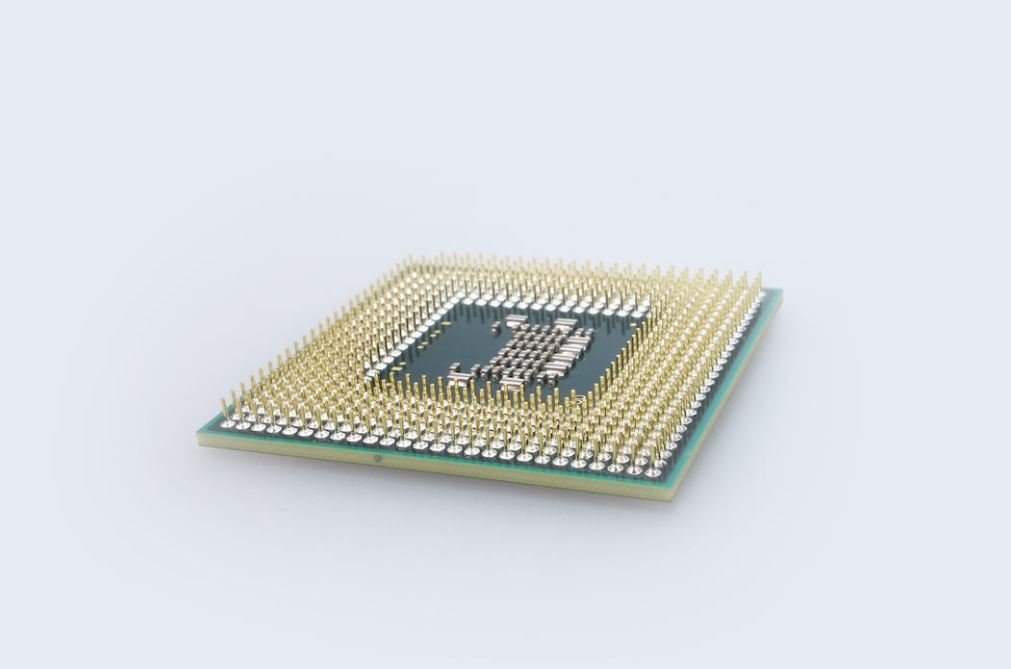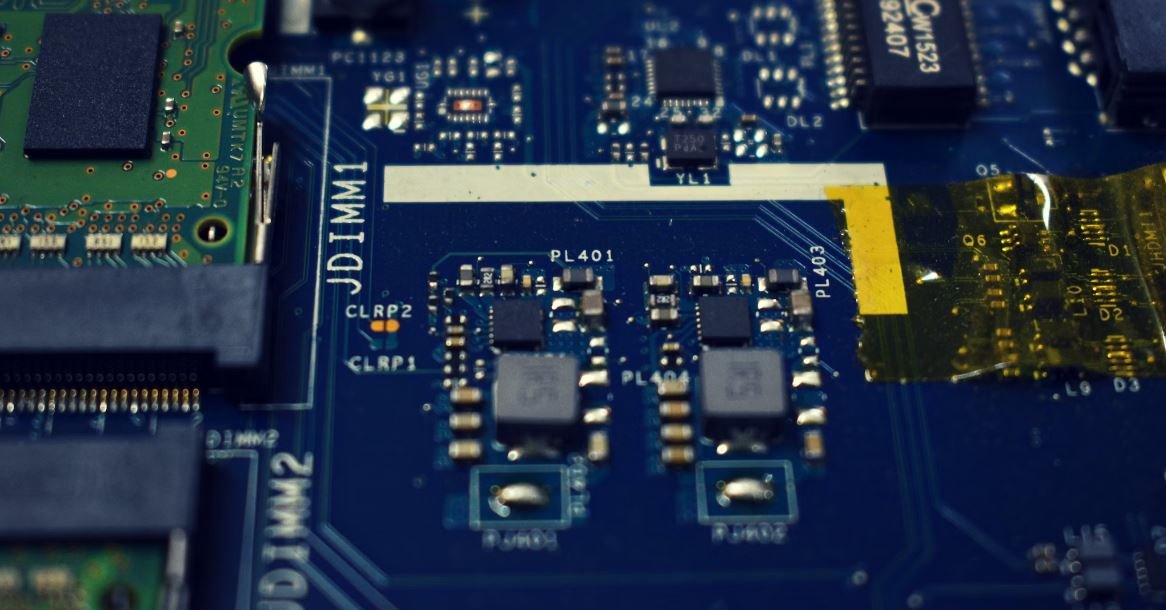**Key Takeaways:**
– AI OCR software uses advanced machine learning algorithms to convert text from images or scanned documents into machine-readable text.
– This technology offers improved accuracy and efficiency compared to traditional OCR methods.
– AI OCR software has diverse applications across industries, including healthcare, finance, retail, and logistics.
– The continuous advancements in AI OCR technology are set to enhance its capabilities further.
One of the primary advantages of AI OCR software is its ability to accurately and quickly extract text from a wide range of document types, including invoices, receipts, forms, and handwritten documents. Traditional OCR methods often struggled with recognizing different fonts, layouts, and languages, resulting in errors and inconsistencies. In contrast, **AI OCR software** leverages deep learning algorithms to analyze and interpret the visual elements of a document, allowing it to accurately recognize and extract text even in complex scenarios. This ensures businesses can efficiently process large volumes of documents, reducing human error and saving valuable time.
*Not only can AI OCR software accurately extract text from various document types, but it can also understand the context and meaning behind the text.* This contextual understanding enables advanced data processing capabilities, such as data categorization, sentiment analysis, and information extraction. For example, in the healthcare industry, AI OCR software can not only extract patient data from medical records but also flag critical information like allergies or pre-existing conditions, empowering healthcare professionals with actionable insights. Similarly, in the finance sector, AI OCR software can automatically extract and classify financial data, simplifying tasks like expense tracking and invoice management.
Here are some notable features and benefits of AI OCR software:
– **Efficiency:** AI OCR software dramatically reduces manual data entry efforts, enabling businesses to process documents at a faster pace.
– **Accuracy:** With intelligent algorithms, AI OCR software minimizes errors in text recognition, ensuring high precision in data extraction.
– **Data Accessibility and Searchability:** The converted text becomes searchable and accessible, making it easy to locate and retrieve information from a large volume of documents.
– **Automation:** AI OCR software automates data extraction processes, reducing dependency on manual labor and streamlining document processing workflows.
– **Cost Savings:** By automating document processing and reducing human errors, businesses can save costs associated with manual data entry and processing.
To better understand the impact of AI OCR software, let’s take a closer look at some real-world applications and the benefits they offer:
**Table 1: AI OCR Software Applications**
| Industry | Application | Benefits |
|———-|————-|———-|
| Healthcare | Medical record digitization | Efficient data extraction, improved patient care |
| Finance | Invoice processing | Faster payment processing, reduced administrative workload |
| Retail | Inventory management | Improved stock control, accurate sales forecasting |
| Logistics | Shipping document processing | Streamlined operations, enhanced document accuracy |
The future of AI OCR software looks promising, with ongoing research and advancements aimed at improving its capabilities even further. As technology continues to evolve, we can expect advancements such as increased language support, better handling of complex document formats, and improved accuracy rates. Moreover, the integration of AI OCR software with other technologies like natural language processing and machine translation holds the potential to unlock new possibilities, enabling businesses to extract and analyze multilingual data more effectively.
**Table 2: Future Advancements in AI OCR Software**
| Advancement | Potential Impact |
|————-|—————–|
| Increased language support | Extended usability across different regions and markets |
| Enhanced document layout recognition | Improved accuracy in recognizing complex document formats |
| Integration with natural language processing | Deeper contextual analysis and understanding of text |
| Integration with machine translation | Effortlessly translate multilingual documents |
In conclusion, AI OCR software has become an invaluable tool for businesses looking to streamline their document processing workflows and extract valuable data from images or scanned documents. Its accuracy, efficiency, and ability to understand context offer numerous benefits across industries. With ongoing advancements and integration with other technologies, AI OCR software is set to have an even greater impact in the future, helping businesses capitalize on the power of data-driven insights.
**Table 3: Benefits of AI OCR Software**
– Improved efficiency by reducing manual data entry efforts
– Enhanced accuracy in text recognition and extraction
– Easy access and searchability of converted text
– Automation of document processing workflows
– Cost savings through reduced human labor and error rates

Common Misconceptions
1. AI OCR software replaces human workers
- AI OCR software is designed to enhance productivity and accuracy, not replace human workers.
- Human intervention is still needed to review and validate OCR results.
- OCR technology merely assists in automating data extraction tasks, freeing up time for more complex and value-added activities.
2. AI OCR software is 100% error-free
- Despite advances in AI OCR technology, errors can still occur during the recognition process.
- Factors such as poor quality images, distorted text, or unusual fonts can impact the accuracy of OCR results.
- It is essential to have a manual validation process in place to catch any inaccuracies and correct them.
3. AI OCR software can read any type of document perfectly
- While AI OCR software can handle a wide range of document formats, it may struggle with highly complex layouts or unconventional designs.
- Documents with handwritten content or cursive writing may pose challenges for accurate text recognition.
- It is crucial to assess the compatibility and limitations of AI OCR software with specific document types before implementation.
4. AI OCR software requires massive computational resources
- Modern AI OCR algorithms have become more efficient, minimizing the need for extensive computational resources.
- Cloud-based OCR solutions allow businesses to access AI OCR capabilities without significant hardware investments.
- Optimization techniques ensure that OCR processes are executed quickly and effectively, even on modest computing systems.
5. AI OCR software is only beneficial for large enterprises
- AI OCR software offers benefits to organizations of all sizes, including small and medium businesses.
- Smaller companies can streamline their administrative processes and improve data accuracy through AI OCR technology.
- The affordability and accessibility of AI OCR solutions have made them accessible to businesses of all scales.

AI OCR Software in Retail
With the rise of e-commerce, accurate data extraction and analysis have become vital for retail businesses. AI-powered OCR software is revolutionizing the industry by enabling efficient data processing, improving inventory management, and enhancing customer experiences. The following table highlights the key features and benefits of AI OCR software in the retail sector.
Financial Institutions and AI OCR Software
Financial institutions deal with vast amounts of paperwork, making document processing a time-consuming task. AI OCR software streamlines these processes by automating data extraction from financial documents, ensuring accuracy and reducing manual errors. The table below showcases the advantages of using AI OCR software in finance.
Healthcare Sector and AI OCR Software
For healthcare providers, fast and accurate patient data extraction is crucial for delivering quality care. AI OCR software significantly improves efficiency in healthcare organizations by automating data entry, minimizing paperwork, and enhancing data security. The table presents the benefits of AI OCR software in the healthcare industry.
Government Agencies and AI OCR Software
Government agencies handle a wide range of documents and forms, requiring extensive data extraction and processing. AI OCR software enables efficient digitization and data extraction, leading to improved citizen services and enhanced governmental operations. The table below demonstrates the advantages of AI OCR software in government agencies.
AI OCR Software in Education
Education institutions deal with numerous forms and paperwork related to admissions, enrollment, and student records. AI OCR software simplifies document processing and data extraction, enhancing administrative workflow and reducing manual effort. The following table highlights the benefits of using AI OCR software in educational settings.
Legal Industry and AI OCR Software
In the legal industry, accurate document analysis and retrieval are essential for case management and research. AI OCR software facilitates fast and efficient data extraction, improving the speed and accuracy of legal processes. The table below showcases the advantages of using AI OCR software in the legal sector.
AI OCR Software in Logistics
The logistics industry relies heavily on document processing, data extraction, and inventory management. AI OCR software enables improved efficiency, accuracy, and real-time tracking, resulting in streamlined logistics operations. The table presents the benefits of AI OCR software in the logistics sector.
Insurance Sector and AI OCR Software
Insurance companies handle vast amounts of paperwork related to claims, policy applications, and customer information. AI OCR software simplifies data extraction and accelerates claims processing, leading to faster customer service and reduced operational costs. The following table highlights the advantages of AI OCR software in the insurance industry.
AI OCR Software in Manufacturing
Manufacturing industries deal with various documents related to production, inventory, and quality control. AI OCR software automates data entry and analysis, enabling efficient inventory management, faster production cycles, and enhanced quality assurance. The table below showcases the benefits of using AI OCR software in manufacturing.
AI OCR Software in Human Resources
Human resources departments handle extensive paperwork related to recruitment, employee records, and performance appraisals. AI OCR software simplifies data extraction, improves data accuracy, and enhances HR processes, leading to increased efficiency and improved employee experiences. The following table highlights the advantages of AI OCR software in human resources.
In conclusion, AI OCR software has transformed various industries by revolutionizing document processing and data extraction. Its benefits span across retail, finance, healthcare, government agencies, education, legal, logistics, insurance, manufacturing, and human resources sectors. By automating these processes, AI OCR software enhances efficiency, accuracy, and productivity, enabling businesses and institutions to streamline operations and ultimately provide better services to their customers.
Frequently Asked Questions
AI OCR Software
What is AI OCR software?
that uses machine learning algorithms to recognize and extract text from images or scanned documents. It allows
computers to convert images of texts into editable and searchable digital files.
How does AI OCR software work?
characters. Utilizing machine learning algorithms, the software learns to recognize and differentiate between
different fonts, languages, and handwriting styles. It then converts the text found in the image into editable and
searchable content.
What are the main applications of AI OCR software?
processes to automate the extraction of information from invoices, contracts, forms, and other paperwork. It is
also utilized in digital archiving, e-commerce, document translation, content extraction, and text analysis tasks.
Can AI OCR software handle handwritten text?
legibility of the handwriting. It is generally more proficient in recognizing printed or typed text than cursive or
highly stylized handwriting.
Is AI OCR software language-specific?
including English, Spanish, Chinese, French, German, and more. The software can automatically identify the language
and apply the appropriate recognition model to accurately extract the text.
How accurate is AI OCR software?
clarity of the text, and the software’s algorithms. Modern AI OCR solutions achieve high accuracy rates, often
exceeding 95%. However, it is important to note that certain scenarios, such as low-quality scans or complex
layouts, may result in lower accuracy rates.
Can AI OCR software preserve the formatting of the original document?
solutions maintain the structure, font styles, text sizes, tables, and other formatting elements while extracting
the text. However, the level of preservation may depend on the capabilities of the specific software used and the
complexity of the original document.
Is AI OCR software secure?
encryption, access controls, and other security measures to protect data privacy. It is essential to choose trusted
vendors and follow best practices for data security to ensure the protection of sensitive information during the OCR
process.
Are there any limitations to using AI OCR software?
accuracy may vary, especially with highly stylized or cursive handwriting. OCR may struggle with poorly scanned or
low-resolution documents. Complex layouts with graphics, tables, or unusual fonts may result in imperfect text
extraction. Regular updates and improvements by software vendors, however, continue to address such limitations
over time.
Can AI OCR software process large volumes of documents?
thousands or even millions of pages quickly, automating what would otherwise be a time-consuming and error-prone
manual task. This scalability is one of the significant benefits of using AI OCR software for document management
and data extraction processes.





